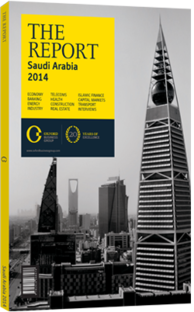Building the workforce: OBG talks to Adel Fakeih, Minister of Labour

To what extent can the Saudiisation programme ensure that nationals are employed in a productive manner rather than being hired to fulfil a quota?
FAKEIH: The Ministry of Labour has endeavoured to create job opportunities for nationals that meet their needs while also contributing more broadly to the economy. To accomplish this, the ministry is working with various stakeholders to develop training programmes so that a well-prepared national can easily replace his foreign counterpart, fully equipped with adequate skills.
The Ministry of Labour has undertaken a series of measures to deter fake Saudiisation. This has proven successful, and has limited the amount of fake Saudiisation cases to only 4% of overall employment figures. We have introduced a coding scheme, which ranks companies based on the number of Saudi nationals they have employed, assigning them a colour of platinum, green, yellow or red, with platinum marking the highest achievement.
At the same time, we have tailored these rankings to each major industry. The idea is to push each of these companies, not only to reach the minimum requirements, but to strive for a green or platinum ranking in a gradual and realistic manner given their particular area of business. Recent figures show that the proportion of nationals in the labour force has risen from 7% to 15.1% since the launch of the Saudiisation initiative in June 2011. The number of Saudi employees was estimated at the end of 2013 to number 1.45m.
What kind of opportunities exist for women to play a larger role in the Kingdom's workforce?
FAKEIH: The Kingdom’s female employment numbers have climbed to unprecedented levels, reaching 27% of the total labour force in 2013. For the past three decades, the number of Saudi female employees did not exceed 55,000, but today it stands at over 400,000 across multiple sectors. Still more can, and is, being done to create additional job opportunities for women in the Kingdom. The database for the Hafiz programme, which administers national unemployment assistance, shows that 80% of registered job seekers are women, with more than 1m resumes. The ministry has sought to provide suitable job opportunities, launching initiatives such as telework, working from home and parttime jobs for female employees. To create further opportunities, the ministry has issued a range of resolutions to open up appropriate avenues for women to work. These moves include the feminisation and Saudiisation of retail shops selling female merchandise, regulating women’s work as cashiers, and promoting female employment in family amusement parks and restaurants. A number of Ministry of Labour guidelines are followed by employers to ensure a convenient environment which facilitates the female employment.
How is the ministry working with educational stakeholders to ensure that Saudis are properly trained to meet the demands of the labour market?
FAKEIH: The quality of educational output is of paramount importance when it comes to employment. With this in mind, the Ministry of Labour, the Training Vocational and Technical Corporation, and the Human Resources Development Fund provide training and rehabilitation programmes that prepare job seekers to join the labour market. The private sector is a vital strategic partner for the ministry’s training programmes, which end with recruitment at the very same private firms in which traineeships were conducted.
As well as the efforts exerted by the private sector, various institutions to train Saudi youth have been established to help meet the needs of the labour market. For this reason, the Ministry of Labour is working with educational institutions to ensure that their curricula reflect the requirements of the job market. On this front, we believe there is still much more that needs to be done by encouraging collaboration between various government entities and the private sector, in order to improve the alignment of our graduates with changing labour market needs and requirements.
You have reached the limit of premium articles you can view for free.
Choose from the options below to purchase print or digital editions of our Reports. You can also purchase a website subscription giving you unlimited access to all of our Reports online for 12 months.
If you have already purchased this Report or have a website subscription, please login to continue.

